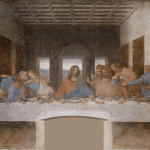 Creepy
Creepy  Creepy
Creepy  Technology
Technology 10 Scientific Breakthroughs of 2025 That’ll Change Everything
 Our World
Our World 10 Ways Icelandic Culture Makes Other Countries Look Boring
 Misconceptions
Misconceptions 10 Common Misconceptions About the Victorian Era
 Mysteries
Mysteries 10 Strange Unexplained Mysteries of 2025
 Miscellaneous
Miscellaneous 10 of History’s Most Bell-Ringing Finishing Moves
 History
History 10 Great Escapes That Ended Right Back in Captivity
 Weird Stuff
Weird Stuff 10 Fascinating Things You Might Not Know About Spiders
 Food
Food 10 Everyday Foods You Didn’t Know Were Invented by the U.S. Military
 History
History 10 Odd Things Colonial Americans Kept at Home
 Creepy
Creepy 10 More Representations of Death from Myth, Legend, and Folktale
 Technology
Technology 10 Scientific Breakthroughs of 2025 That’ll Change Everything
 Our World
Our World 10 Ways Icelandic Culture Makes Other Countries Look Boring
Who's Behind Listverse?

Jamie Frater
Head Editor
Jamie founded Listverse due to an insatiable desire to share fascinating, obscure, and bizarre facts. He has been a guest speaker on numerous national radio and television stations and is a five time published author.
More About Us Misconceptions
Misconceptions 10 Common Misconceptions About the Victorian Era
 Mysteries
Mysteries 10 Strange Unexplained Mysteries of 2025
 Miscellaneous
Miscellaneous 10 of History’s Most Bell-Ringing Finishing Moves
 History
History 10 Great Escapes That Ended Right Back in Captivity
 Weird Stuff
Weird Stuff 10 Fascinating Things You Might Not Know About Spiders
 Food
Food 10 Everyday Foods You Didn’t Know Were Invented by the U.S. Military
 History
History 10 Odd Things Colonial Americans Kept at Home
10 Unexpectedly Deep Messages in ’70s Children’s TV Shows
The 1970s were a golden age for kids’ TV that went way beyond just entertaining the little ones. These shows tackled heavy stuff like environmentalism, diversity, and even existentialism, all wrapped up in colorful packaging for young minds. While some have stuck around in our collective memory, others have faded away despite their profound messages. It was a perfect storm: society was changing, psychedelic influences were seeping into media, and TV was increasingly seen as an educational tool. The result? Children’s programming that wasn’t afraid to go deep.
10The Changes (1975)
This weird British sci-fi show depicted a society suddenly gripped by an irrational hatred of technology. When a mysterious noise makes people violently reject and destroy all machinery, Britain basically reverts to the Dark Ages where even mentioning technology becomes taboo. Through the eyes of a kid who discovers the source is some strange rock formation, The Changes gave us a surprisingly forward-thinking look at our complicated relationship with technology. The show basically asked kids: what would we lose, and maybe gain, if we ditched all our tech dependencies? A relevant question for today’s smartphone-addicted world, right? What really stood out was how the show didn’t pull any punches in showing mob mentality and societal breakdown, pretty intense stuff for the after-school crowd.
9Schoolhouse Rock! (1973-1985)
We all remember those catchy tunes about grammar and math from Schoolhouse Rock. But beyond the fun melodies, the show slipped in some pretty deep civics lessons on Saturday mornings. The “America Rock” segments, created for the U.S. Bicentennial, didn’t shy away from showing the messy realities of democracy and government. “I’m Just a Bill” explained how laws come to be, while other songs tackled topics like immigration, women’s suffrage, and constitutional rights. These three-minute bursts of knowledge respected kids’ intelligence by explaining complex government processes without simplifying the messiness of democracy. Schoolhouse Rock used music and animation to make these ideas stick. The catchy lyrics and engaging visuals have given Schoolhouse Rockk a life long after the seventies, with episodes still finding their way into classrooms today. They continue to teach new generations with their timeless approach to learning, making complicated topics accessible and memorable for young minds.
8Slim Goodbody (1975)
Back when kale was just a garnish, Slim Goodbody was already teaching kids about understanding and respecting their bodies. John Burstein, with his unforgettable unitard featuring painted organs, brought a mix of education and slight shock value as the host. While it might have caught some parents off guard, the show’s message was groundbreaking: your body is an incredible system that deserves understanding and care. Slim Goodbody tackled topics like nutrition, exercise, and mental health at a time when comprehensive health education for kids was practically nonexistent. The show’s straightforward approach to human anatomy helped normalize conversations about bodies in a way that was informative rather than awkward, empowering kids with knowledge free from embarrassment or mystery.
7Zoom (1972-1978)
PBS’s Zoom flipped the script on children’s TV by letting kids themselves run the show. It featured a diverse cast of children (“Zoomers”) sharing ideas, performing skits, and demonstrating activities sent in by viewers. Beyond that earworm of a theme song and the weird “Zoom” language, the show had a powerful message about kids having agency. By showcasing kid-created content and featuring children from different backgrounds working together, Zoom basically said: “Hey, kids’ voices matter too.” One nostalgic viewer described it perfectly as having an “inmates running the asylum” vibe that thrilled children even as it probably gave adults headaches. This democratic approach to content creation basically predicted YouTube Kids by about four decades.
6The Most Important Person (1972-1975)
The Most Important Person delivered some deep emotional education in short animated segments on CBS. Each episode tackled a different aspect of growing up and emotional intelligence, with straightforward titles like “Feelings,” “Sharing,” and “Being Afraid.” What made these shorts special was how they just flat-out acknowledged that growing up is emotionally complicated, feelings are weird, friendships can be hard, and figuring yourself out takes work. The central message was that the most important person is you, not in a selfish way, but in terms of self-worth and emotional health. These shorts were basically giving preschoolers therapy concepts decades before “emotional intelligence” became a buzzword in education.
5Star Blazers (1979-1984)
As one of the first anime series to catch on with American kids, Star Blazers refused to talk down to its young audience. Instead, it hit them with heavy themes of death, sacrifice, and environmental disaster. Set in a post-apocalyptic future where Earth’s been bombarded with radioactive meteors, the show followed the crew of the space battleship Argo on a desperate mission to save humanity. Unlike most American cartoons where nobody ever really got hurt, Star Blazers featured characters who actually died and stayed dead, moral gray areas, and complex political conflicts. Kids connected with it precisely because it acknowledged the seriousness of war, environmental destruction, and human weakness while still offering hope. Its ongoing storylines taught kids that actions have real consequences, pretty heavy stuff for after-school viewing.
4Big Blue Marble (1974)
Big Blue Marble was a pioneering children’s television series that brought the world into living rooms across America. Premiering in 1974, the show aimed to foster global awareness and cultural understanding among young viewers. Each episode featured stories of children from diverse backgrounds and countries, showcasing their daily lives, traditions, and challenges. By highlighting both the differences and similarities between cultures, Big Blue Marble encouraged empathy and curiosity about the wider world. Its innovative approach to storytelling helped kids appreciate the richness of global diversity while also promoting environmental consciousness. Through its engaging narratives and authentic portrayals, the show inspired a generation to think globally and act locally.
3Sigmund and the Sea Monsters (1973-1975)
Back when weekend mornings were mostly for silly cartoons, Sigmund and the Sea Monsters was diving into the depths of acceptance and friendship. With its quirky sea creature cast, this show featured Sigmund, a lovable sea monster who refused to scare people and got kicked out of his undersea family. Finding refuge with two brothers in their clubhouse, Sigmund brought a mix of charm and chaos. While it might have seemed like lighthearted fun, the show’s message was quite profound: being different is okay, and true friends stand by you no matter what. Sigmund and the Sea Monsters tackled themes of individuality and empathy at a time when TV lessons were mostly about sharing toys. Its playful approach helped kids see that real connections come from looking beyond appearances and embracing uniqueness.
2New Zoo Revue (1972-1977)
New Zoo Revue hit the airwaves from 1972 to 1977, blending music, humor, and life lessons in a way that captured kids’ imaginations. Hosted by Doug and Emmy Jo, the show featured fun-loving animal friends like Freddie the Frog, Charlie the Owl, and Henrietta Hippo. Each episode dived into topics such as patience, courtesy, and cooperation, using catchy tunes and relatable tales to make learning feel like play. What seemed like a simple mix of puppets and songs was actually a clever method to teach essential social skills. The show’s vibrant characters and their everyday adventures inspired children to approach life with kindness and understanding, turning each episode into an engaging lesson in empathy.
1Captain Kangaroo (1970s era)
Though Captain Kangaroo started back in the ’50s, its ’70s episodes embraced increasingly sophisticated messages as the decade rolled on. Beyond the gentle humor and storytelling of earlier years, the show began incorporating segments about conservation, cultural diversity, and disability awareness. The Captain himself (Bob Keeshan) was passionate about promoting reading and emotional well-being, often talking directly to kids about handling tricky feelings like jealousy, anger, and disappointment. What made Captain Kangaroo special was its unhurried pace that gave children space to think rather than bombarding them with hyperactive stimulation. The show’s respect for childhood as valuable in itself, not just as prep time for being a grown-up, was revolutionary when many kids were still expected to be “seen and not heard.”








